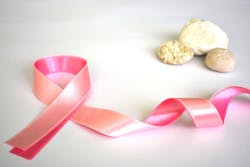A chemist from Purdue University has found a way to synthesize a compound to fight a previously “undruggable” cancer protein with benefits across a myriad of cancer types, according to a news release from the university.
Inspired by a rare compound found in a shrub native to North America, Mingji Dai, Professor of Chemistry and a scientist at the Purdue University Center for Cancer Research, studied the compound and discovered a cost-effective and efficient way to synthesize it in the lab.
The compound – curcusone D – has the potential to help combat a protein found in many cancers, including some forms of breast, brain, colorectal, prostate, lung, and liver cancers, among others. The protein, dubbed BRAT1, had previously been deemed “undruggable” for its chemical properties. In collaboration with Alexander Adibekian’s group at the Scripps Research Institute, they linked curcusone D to BRAT1 and validated curcusone D as the first BRAT1 inhibitor.
Curcusones are compounds that come from a shrub named Jatropha curcas, also called the purging nut. Native to the Americas, it has spread to other continents, including Africa and Asia. The plant has long been used for medicinal properties – including the treatment of cancer – as well as being a proposed inexpensive source of biodiesel.
Dai was interested in this family of compounds – curcusone A, B, C and D.
Researchers tested the compounds on breast cancer cells and found curcusone D to be extremely effective at shutting down cancer cells. The protein they were targeting, BRAT1, regulates DNA damage response and DNA repair in cancer cells. Cancer cells grow very fast and make a lot of DNA. If scientists can damage cancer cells’ DNA and keep them from repairing it, they can stop cancer cells from growing. The research was recently published in the Journal of the American Chemical Society.
Dai and his team believe that as effective as curcusone D is by itself, it may be even more potent as part of a combination therapy. They tested it alongside a DNA damaging agent that has already been approved by the U.S. Food and Drug Administration and found that this combination therapy is much more effective.
One difficulty in studying curcusones as potential cancer treatments is that, while the shrub they come from is common and inexpensive, it takes massive amounts of the shrub to yield even a small amount of the compounds. Even then, it is difficult to separate the compounds they were interested in from the rest of the chemicals in the shrub’s roots.

